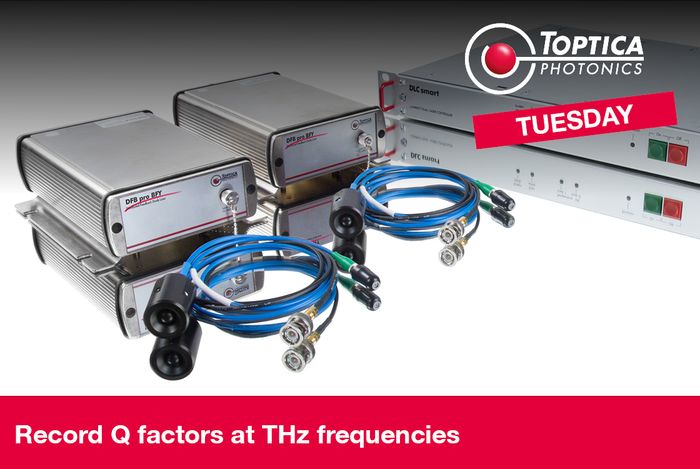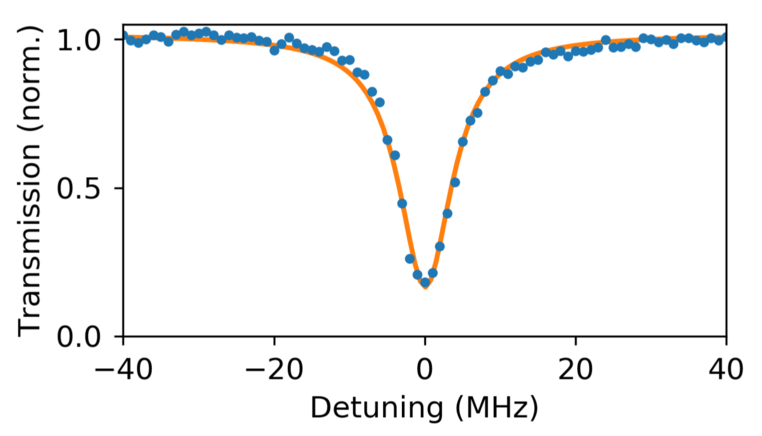New record for quality (“Q”) factors of terahertz resonators
Researchers at the University of Auckland (New Zealand) have set a new record for quality (“Q”) factors of terahertz resonators. The team, led by Dominik Vogt and Rainer Leonhardt, machined subwavelength-thin discs of high-resistivity silicon. By carefully choosing the dimensions of the disc, they were able to shift a large proportion of the propagating terahertz wave to a so-called evanescent field that extends outside the disc, thus minimizing losses in the silicon bulk material. This resulted in an ultrahigh Q factor greater than 120,000 at 0.6 THz. The authors used TOPTICA’s TeraScan 1550 to characterize their resonators.
Interestingly, the large part of the wave that travels outside the resonator makes the setup a promising candidate for terahertz-based trace-gas detection. In a companion paper, Vogt and his colleagues were able to measure parts-per-million concentrations of water vapor in the vicinity of the disc. In contrast to established gas-sensing techniques, the novel resonator-based approach requires neither a long-path absorption cell, nor any vacuum equipment, because the measurement is performed at normal pressure.
References:
D.W. Vogt, A.H. Jones, T.A. Haase, R. Leonhardt: Subwavelength thick ultrahigh-Q terahertz disc microresonators; Photonics Research 8:7 (2020) 1.
D.W. Vogt, A.H. Jones, R. Leonhardt: Terahertz gas-phase spectroscopy using a sub-wavelength thick ultrahigh-Q microresonator; Sensors 20 (2020) 3005.
Photograph of a silicon disc microresonator with 12 mm diameter and 66 µm thickness. Image: University of Auckland (New Zealand)
Close-up of a resonance with a linewidth of about 7 MHz. Image: University of Auckland (New Zealand)



